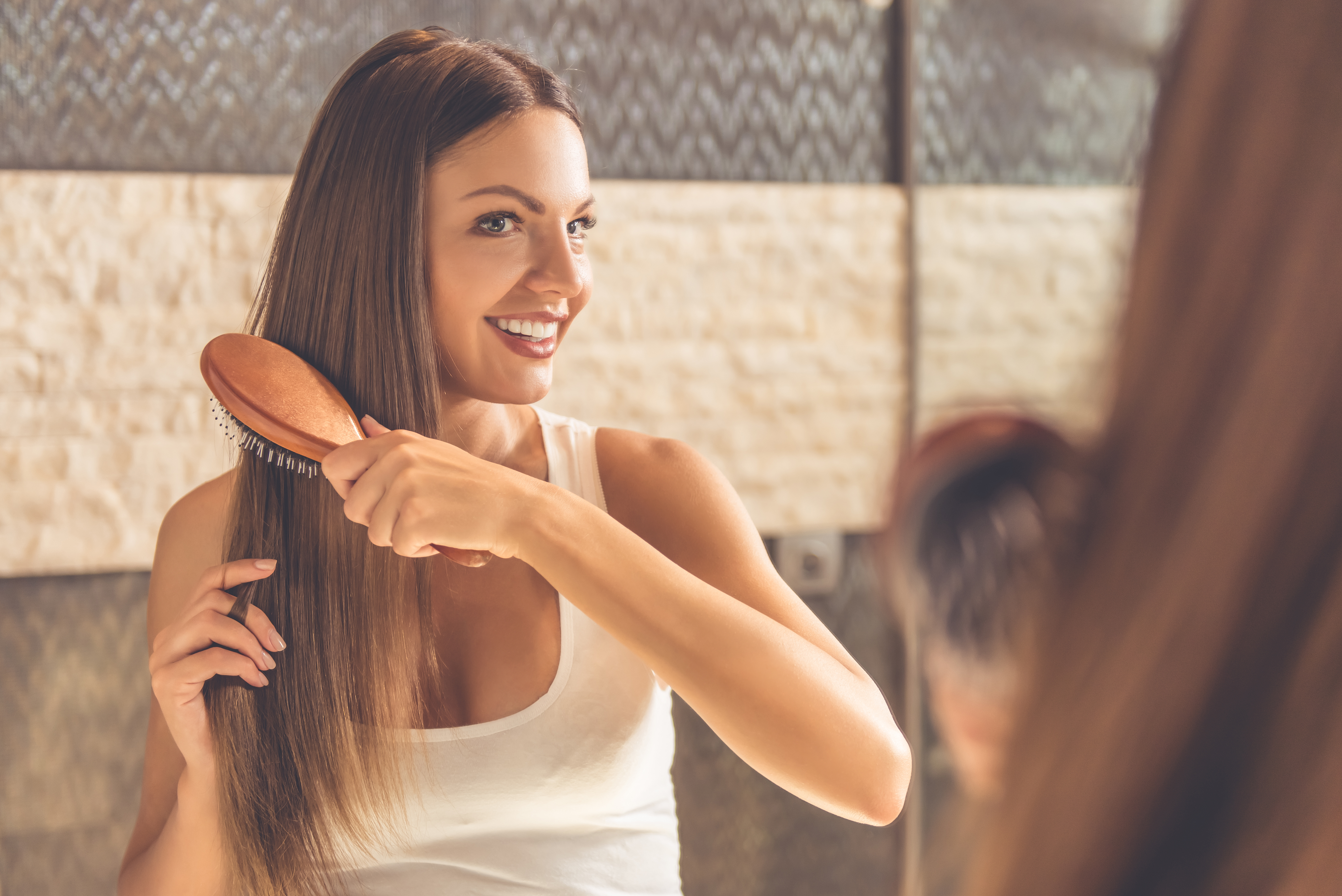Which Hair Brush Is Best For You?
Oct 14th 2019

Hair brushes are much more than mere aesthetic tools, even though most people believe they are only meant for styling hair. In fact, brushing regularly has the potential to substantially improve the health, flexibility, and longevity of your hair, but only if you use a hair brush suited to your particular hair type and for your particular hair needs. By properly gauging your hair type, and by choosing the right brush for it, the more beautiful and resilient your hair will become.
The Benefits of Brushing
As with many daily routines, it’s easy to lose sight of why brushing is so important. Regular brushing has a variety of benefits, including:
- Managing Excess Oil on Your Scalp — If left to their own devices, your scalp and roots will accumulate excess oil, while the ends of your hair will dry out. Brushing your hair, in fact, spreads this oil around, ensuring that every part of your hair is sufficiently, but not excessively, moisturized.
- Taking Care of Tangles — Regular brushing helps prevent your hair from tangling, which not only saves you the trouble of untangling it later, but also helps to protect your hair from breakage. Regular brushing also helps stop kinks from forming on your hair.
- Dealing With Dead Hair — Brushing allows you to get rid of dead follicles in regular intervals. Otherwise, they tend to build up and fall out at inconvenient times.
- Fending Off Fingers — Brushing makes it easier to keep your fingers out of your hair, as you are less likely to feel the need to untangle or fluff it manually. Not only is running your fingers through your hair a nervous habit, but it can also exacerbate oil build-up, as it spreads grease from your hands into your hair.
Don’t think of brushing as a chore. Think of it as an investment in the beauty and longevity of your hair. The more diligently you brush, the easier it is to keep your hair healthy and looking its best under any and all circumstances.
The Importance of Finding the Right Brush
While brushing is generally beneficial, failing to match your hair to the right brush can exacerbate many of the problems that brushing is intended to solve. So, before you choose a product, you should take into account your hair’s:
- Thickness — Thicker hair has a tendency to create static and trap brushes, thus requiring a hair brush that glides through your hair easily and is unlikely to break your hair. For thinner hair, you should choose a brush that adds volume.
- Oil Content — If your hair tends to become dry toward its ends, you should opt for a brush made from boar bristles or from other material that distributes oil more effectively.
- Frizziness — For hair that is chronically frizzy, look for a brush that will swiftly flatten it out, without adding too much volume.
- Styling Preferences — Certain types of brushes can help create preferred styles, such as light curls. Some brushes can also facilitate the way you clean or dry your hair.
- Fragility — If your hair is particularly prone to breaking, you should choose a brush that will not put stress on the follicles when you are styling with it.
Once you have a strong sense of your hair’s characteristics, you can then consider which brush is best for you.
Common Hair Brushes
The most common brushes on the market include:
- Synthetic Bristle Brushes — Containing bristles made out of nylon or other artificial materials, this type of hair brush is ideal for removing tangles. It also minimizes static, making it the perfect brush for those with thick, voluminous hair.
- Wet Brushes — Designed for use on wet hair, this type of brush works best for those with relatively thin or tangle-free hair. Its sturdy bristles minimize pull, preventing you from damaging your hair if you comb it while it is wet.
- Boar Bristle Brushes — As its name implies, this hair brush uses bristles made from boar hair. A boar hair brush is ideal for spreading oil around your hair, making it the perfect brush for those of you who have greasy roots but dry ends.
- Teasing Brushes — Also using boar bristles, this brush is designed to create stylistic knots with minimal risk to your hair. This makes it ideal for those of you who have fragile hair but still want to create elaborate styles.
- Vented Brushes — This type of brush is suited for those of you who have fragile hair but frequently need to blow dry their hair. It holds your hair out and facilitates the spread of hot air, thus speeding up drying time and minimizing the chance of heat damage.
- Paddle Brushes — Created to flatten hair, this brush is ideal if you have to deal with chronic frizziness.
- Mixed Brushes — This hair brush contains a combination of nylon and boar bristles, allowing you to perform a range of styling functions. It makes a good all-purpose brush for any hair type.
Choosing the right brush is a powerful first step to proper hair care. Along with effective shampoos and conditioners, it will keep your tresses healthy and beautiful for the long haul.
